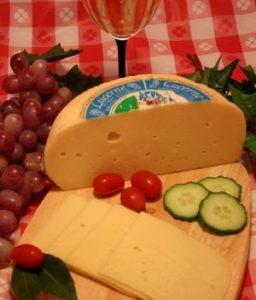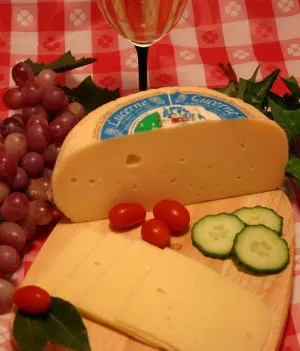Blog
Cheese Glossary: The Letter L
It’s time to return to the cheese glossary. Onto the letter L!

Lactose
A type of sugar found naturally in milk.
Lacy Swiss
Lacy Swiss was invented by Alpine Lace Brands in 1985 in response to the growing need for healthier alternatives. This cheese is closely related to Swiss cheese, but the whole milk used to produce swiss cheese is replaced with low fat milk to provide a healthier alternative with a lower fat content. It gets its name from the lacy appearance of the slices, which usually have a creamy, ivory color to them. It has a delightfully light and nutty flavor. If you follow a lactose-free diet, then this cheese is naturally free of lactose.
Lacy Baby Swiss
Lacy Baby Swiss is a young, semi-soft cheese distinguishable by its myriad of small holes. Baby Swiss is made by substituting water for the milk’s whey to slow bacterial action compared to a traditional Swiss Cheese. The Lacy version has smaller holes and a milder flavor, as well as the lower fat and sodium content found in Lacy Swiss.
Limburger
Limburger is rated as one of the stinkiest cheeses in the world! It is a spreadable cheese with an almost bitter flavor. A rind washed cheese, it has a distinct brown-colored rind with semi-soft, ivory cheese inside. It can be quite mild but it also has a distinct grassy and mushroom taste. The aftertaste has a tang to it.
The bacteria Brevibacterium linens causes the odor and the maturing process which creates Limburger. When it is young it has a firm, crumbly texture with a salty flavor, like feta. At six weeks, the edges soften but the center stays firm. By two months it is almost all smooth and creamy and by three months it develops its intense smell and flavor. Limburger originated in the historical Duchy of Limburg, which is now divided between modern-day Netherlands, Belgium, and Germany. However, most Limburger today comes from Germany. Only one company in the United States still makes it, the Chalet Cheese Cooperative of Monroe, Wisconsin. We’re proud to source our Limburger Cheese from Wisconsin.
Lipolysis
This refers to a process that takes place during cheesemaking. Milk contains a fat (or lipid) called triglyceride. Using enzymes called lipases, the fatty acids in triglyceride are separate from the glycerol. They become free fatty acids that have taste and aroma. Without this process, cheese would be incredibly bland.
Lucerne
Lucerne Cheese is a young, semi-soft cheese with small holes, somewhat similar to Baby Swiss. It has a very mild flavor that is both light and smooth. It’s also lower in fat and sodium than Swiss cheese, making it a delicious favorite for those counting calories or watching their sodium intake.
Is there anything else you would like us to define in the cheese glossary? Let us know in the comments!




